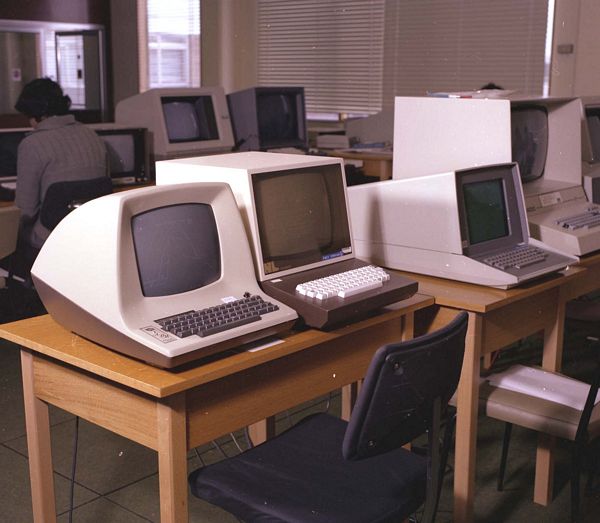

The terminals in this pool were a mix of current well-priced US equipment and an attempt to buy British when possible.

Lear Siegler manufactured the ADM3A from around 1977 and it predates the DEC VT100. It was both inexpensive and rugged which were the attractions for the terminal pool. It also had a set of DIP switches (even/odd parity, 7/8 bits, etc) on the back which allowed it to be used with the whole range of ICF machines. The terminals cost about $1000 each with discount.
Thanks to John Edwards for these Newbury Lab recollections.
Newbury Lab, as the name suggests, began in Newbury, Berkshire (on the Bone Lane industrial estate). The designer of all their VDUs was Technical Director Geoff Tily.
John Edwards went to work for them in 1974, when they had been going a while. The main product in 1974 was the NL 21-80 (21 lines of 80 characters). At the time static RAM was expensive, rare, and slow, so the page memory used 80-bit dynamic shift registers, 4 bits wide, endlessly recircling. Clever TTL logic inserted and deleted characters on the fly. The 21-80 was joined by the 24-80 in late 1975/early 1976. The shift-registers were replaced by static RAM.
John Edwards left in mid 1976, with a contract to write the manuals for the NL machines. He wrote the 24-80 manual, but by the time the final printed copy arrived it had been renamed the 7001/2 (a marketing decision to rationalise the anticipated range of models).
The aim had been to replace the earlier machine with the 7004, a four-slot multi-tasking 16-bit processor in LS-TTL which was pretending to be a VDU engine but this was delayed and eventually abandoned. As the marketing and manufacture of the old range had been more or less run down, the gap in the product line was filled by the 7002 which was quickly brought out.
John Edwards was the Field Service Engineer for the North, working out of Macclesfield. Back then it was worth driving 100 miles just to change a sticky keyboard key. Not the keyboard, just the key! The shift-register chips were a common failure; just one failed bit nobbled a whole line, since the whole line passed through it.
Eventually, the 7001/2 was replaced by a similar machine, the 7004/5.